
|
Lumbar Spondylosis and Spondylolisthesis |
|
Spondylolisthesis is a slippage on one vertebra on another. The term derives from greek spondylos (vertebra) and olisthesis (slip or slide down). The most commonly affected level is L4/5 . A variety of factors contribute to the development of spondylolisthesis and these form the basis of the most commonly used classification system, by Wiltse, Macnab and Newman: 1. Congenital or Dysplastic: congenital hypoplasia of the posterior elements facet joints and laminae especially at L5/S1 and associated therefore with spina bifida occulta. 2. Isthmic: problems associated with the pars interarticularis, this is further subdivided into 2A (chronic breakage of pars), 2B (elongated pars –representing repeated injury and fracture healing) and 2C (acute pars fracture). 3. Degenerative: due to disc degeneration and subsequent development of instability, subsequent facet overloading and facet degeneration. The role of the lumbosacral or slip angle or how tilted the vertebra with respect to the horizontal is also postulated to play a major role. 4. Traumatic: due to an acute fracture not involving the pars interarticularis, an example is fracture through the pedicles 5. Pathologic: due to turmour metastasis or infection or other bone diseases 6. Iatrogenic or Postsurgical: after decompression surgery with partial or complete loss of posterior elements typically after overzealous resection of the pars interarticularis or facet joints.
|
|
Case Illustration - Type 2A– Isthmic Spondylolisthesis - Chronic Pars Defect |
|
CT Facet Joint Degeneration with bone cyst formation |

|
Return to Lumbar Spine Problems |
|
Female late Forties Complaining of bilateral back and buttock pain with leg pain the right side is worse than left The symptoms are getting progressively worse over the past 6 months
|
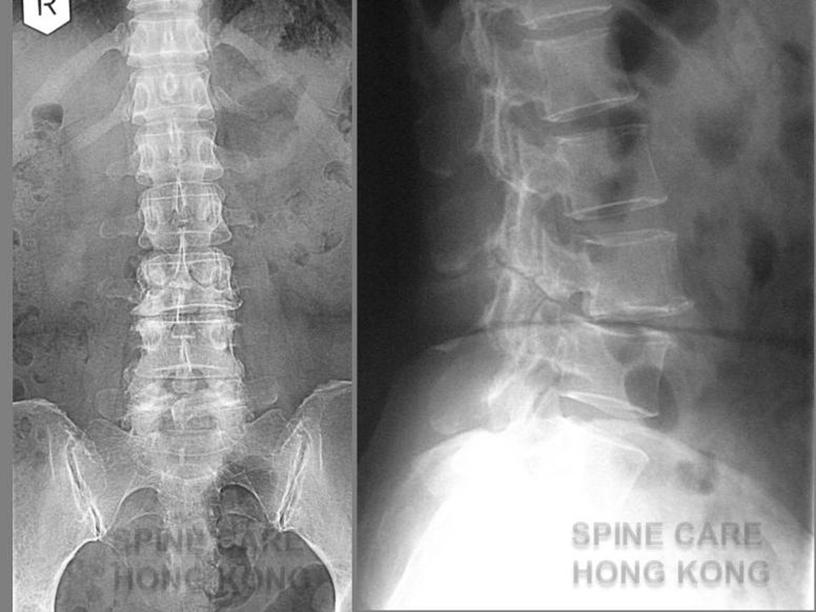
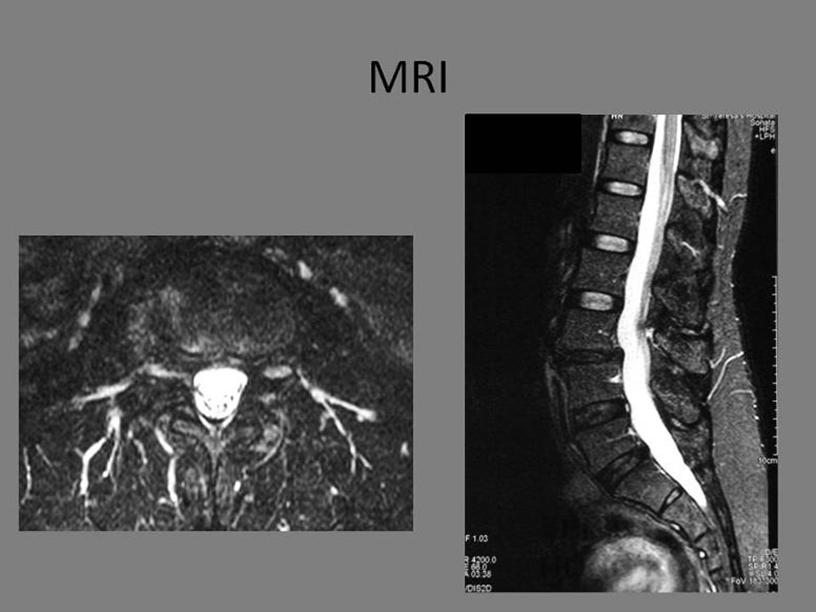
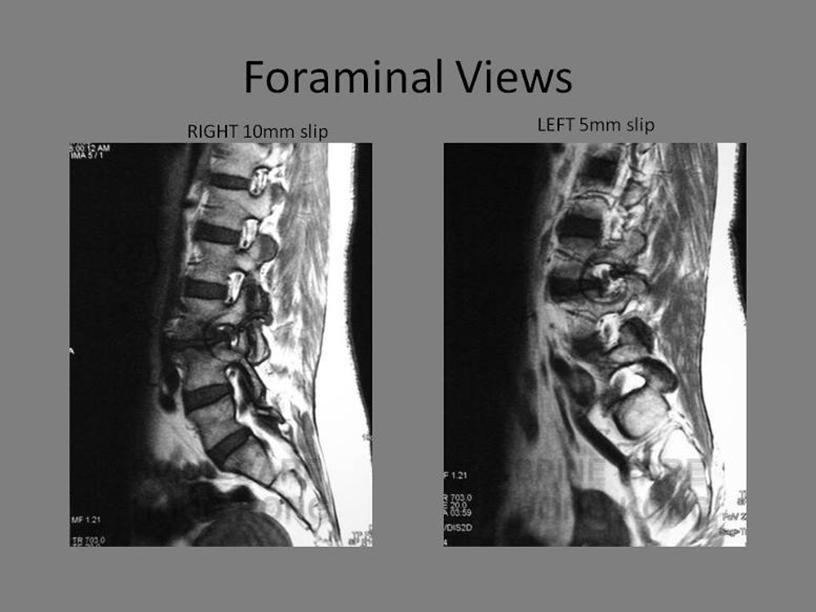
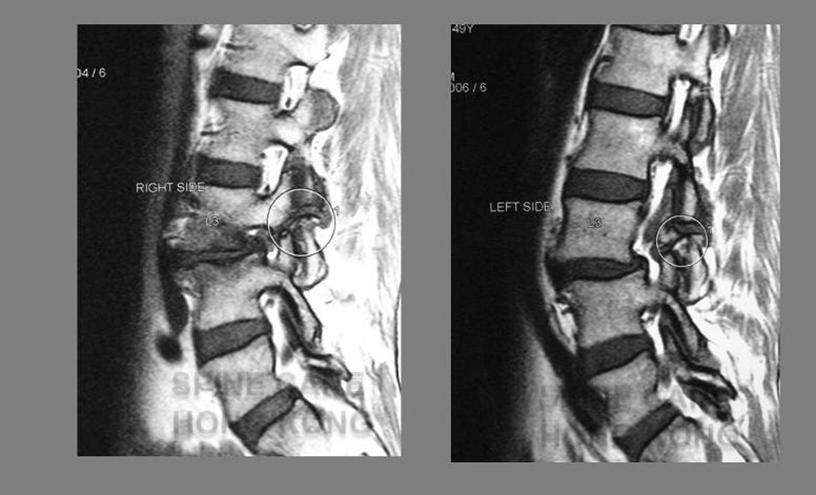
|
BILATERAL PARS INTERARTICULARIS DEFECTS - CHRONIC BREAKAGE - type 2A |
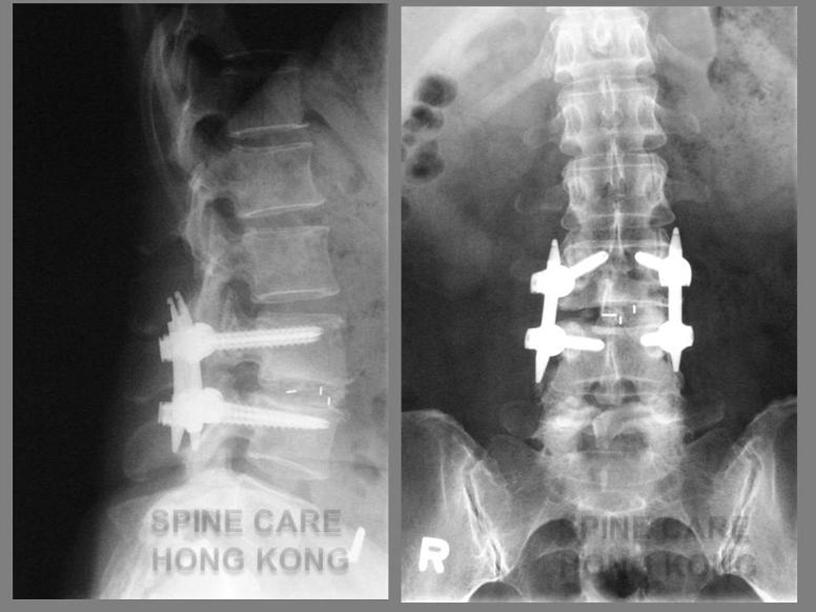
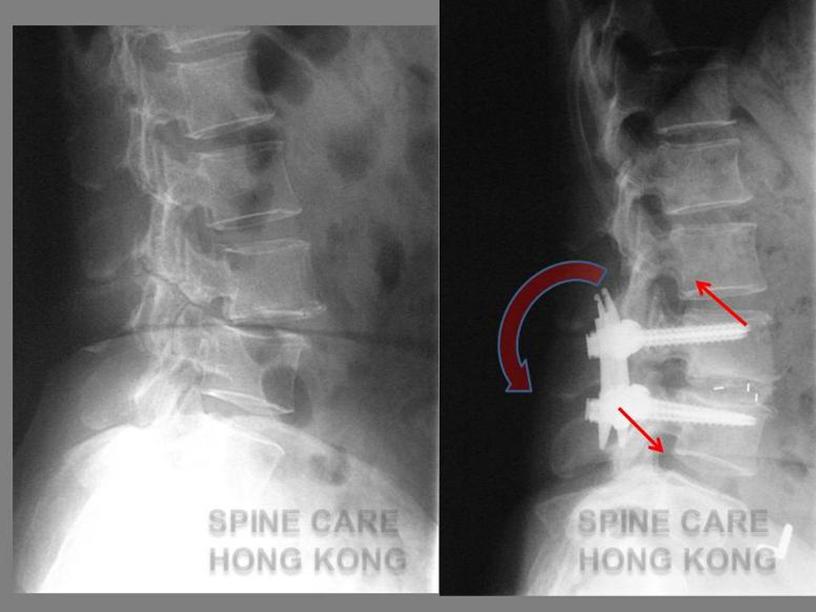
|
OLISTHESIS Reduction using SEXTANT Instrumentation |
|
Severe Lumbar L3-4 Foraminal Stenosis - Right side more severe than Left |
|
Degenerative Spondylolisthesis Sextant TLIF Click to continue |

|
SPINE CARE HONG KONG |
|
ACCURATE DIAGNOSIS, STRUCTURED TREATMENT |

|
Copyright © 2008 Spine Care Hong Kong |
